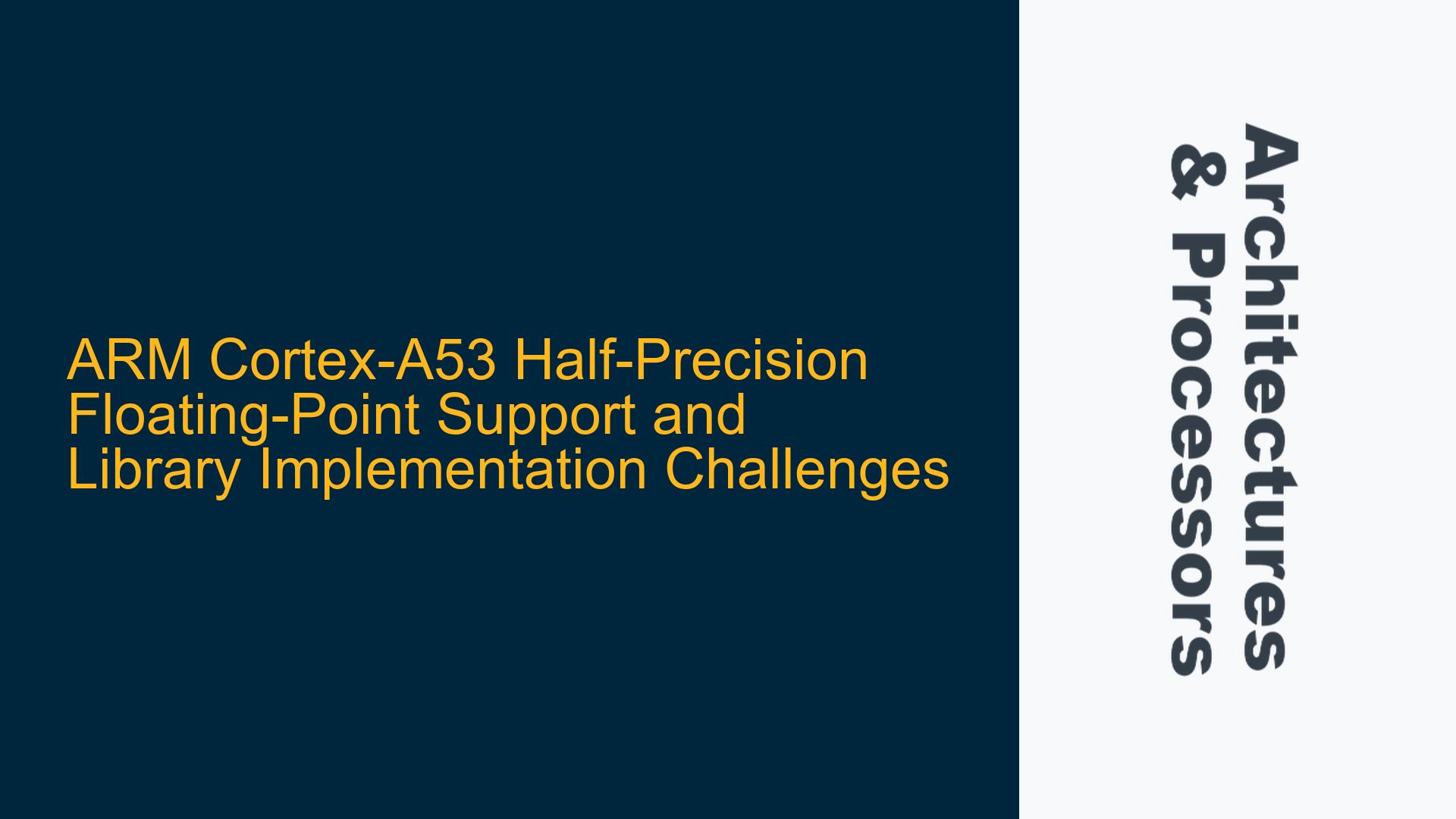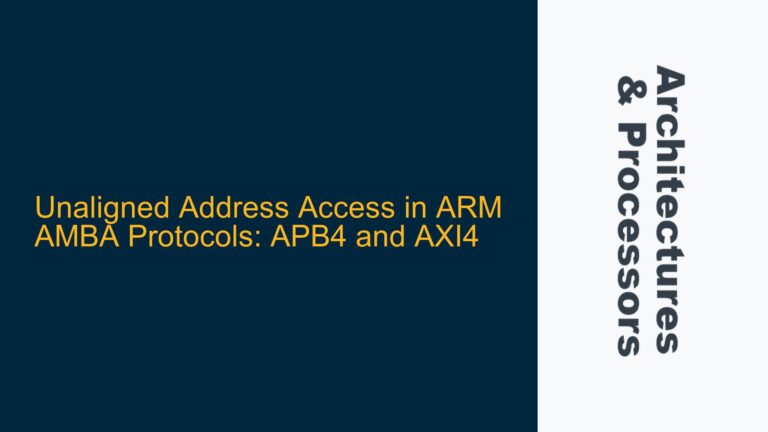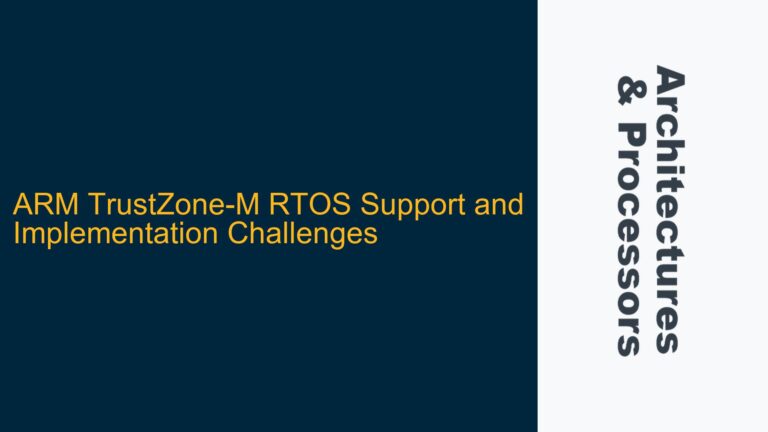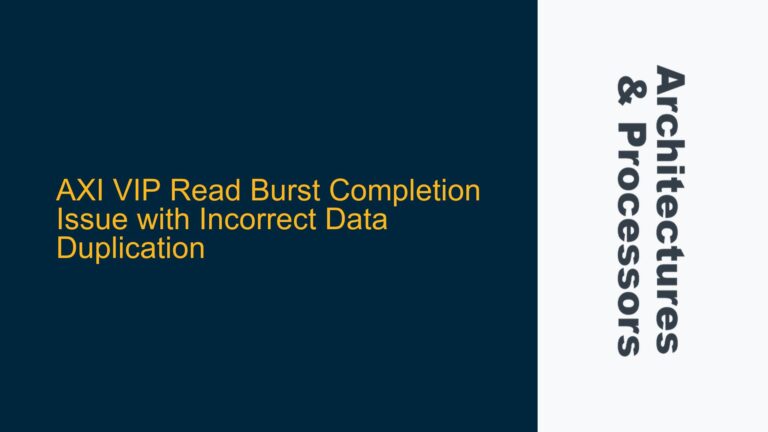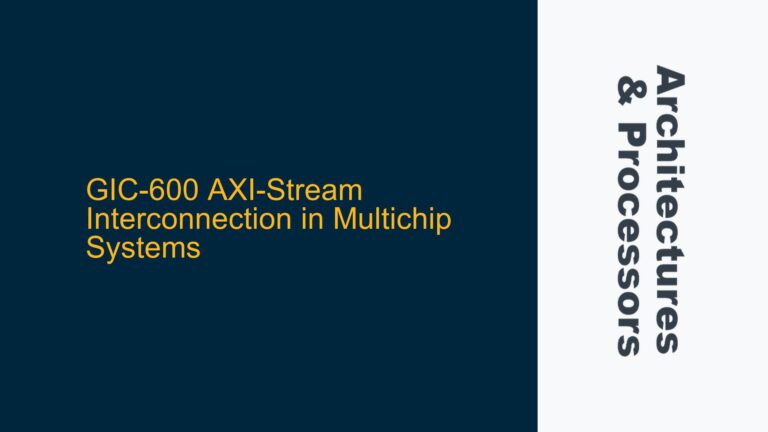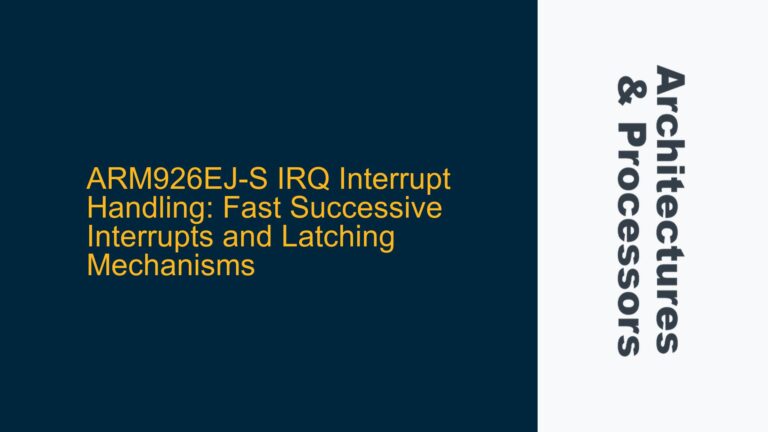ARM Cortex-A53 Half-Precision Floating-Point Hardware Limitations and Use Cases
The ARM Cortex-A53 processor, which powers the Raspberry Pi 3, is a widely used 64-bit ARMv8-A core designed for energy efficiency and performance. However, it lacks native hardware support for half-precision (FP16) floating-point arithmetic operations, which are increasingly important in applications such as machine learning, digital signal processing, and graphics rendering. The Cortex-A53 only supports half-precision floating-point conversion operations, as indicated by the SIMDHP bit in its Technical Reference Manual (TRM). This means that while the processor can convert between FP16 and single-precision (FP32) or double-precision (FP64) formats, it cannot perform arithmetic operations like addition, multiplication, or transcendental functions directly on FP16 data types.
The absence of native FP16 arithmetic support in the Cortex-A53 necessitates the use of software-based libraries to emulate these operations. This introduces performance overhead, as FP16 arithmetic must be implemented using FP32 or FP64 operations, followed by conversion back to FP16. This limitation is particularly significant for applications that rely heavily on FP16 computations, such as neural network inference, where FP16 is often used to reduce memory bandwidth and improve computational throughput.
In contrast, ARMv8.2-A architectures, such as the Cortex-A76, introduce native support for FP16 arithmetic operations. This hardware support enables direct computation on FP16 data types, significantly improving performance and energy efficiency for FP16-intensive workloads. However, even with hardware support, the availability of optimized libraries for FP16 mathematical functions remains a challenge, as many standard libraries, such as <math.h>, do not provide FP16 versions of common mathematical functions like sinf, cosf, or sqrtf.
Software-Based FP16 Libraries and Their Limitations
Given the lack of native FP16 arithmetic support in the Cortex-A53, developers must rely on software libraries to perform FP16 computations. One such library is the Half library, which provides a C++ implementation of IEEE 754-compliant half-precision floating-point arithmetic. The Half library supports basic arithmetic operations, type conversions, and comparisons, but it does not provide implementations of advanced mathematical functions like trigonometric, logarithmic, or exponential functions.
The Half library operates by converting FP16 values to FP32, performing the computation using FP32 arithmetic, and then converting the result back to FP16. While this approach ensures compatibility with hardware that lacks native FP16 support, it introduces significant performance overhead due to the repeated conversion steps. Additionally, the accuracy of FP16 computations may be compromised, as intermediate results are computed using FP32 precision, which can lead to rounding errors when converting back to FP16.
For developers targeting ARMv8.2-A architectures with native FP16 support, such as the Cortex-A76, the challenge shifts from emulating FP16 arithmetic to finding optimized libraries that leverage the hardware’s capabilities. Unfortunately, the ecosystem for FP16 mathematical libraries is still evolving, and many standard libraries do not yet provide FP16 versions of their functions. This gap in the software ecosystem requires developers to either implement their own FP16 mathematical functions or rely on third-party libraries that may not be fully optimized for ARM architectures.
Implementing FP16 Mathematical Functions on ARM Architectures
To address the lack of FP16 mathematical libraries, developers can take several approaches depending on their target hardware and performance requirements. For the Cortex-A53, which lacks native FP16 arithmetic support, the most practical solution is to use a software library like the Half library for basic arithmetic operations and implement custom functions for advanced mathematical operations. These custom functions can be implemented using FP32 arithmetic and conversion steps, but care must be taken to minimize performance overhead and ensure numerical accuracy.
For ARMv8.2-A architectures with native FP16 support, developers can leverage the hardware’s capabilities by using intrinsics or inline assembly to directly perform FP16 arithmetic operations. ARM provides a set of intrinsics for FP16 operations in the ARM C Language Extensions (ACLE), which can be used to write high-performance FP16 code. Additionally, developers can explore third-party libraries that provide optimized FP16 mathematical functions, although these libraries may require customization to fully exploit the hardware’s capabilities.
When implementing FP16 mathematical functions, developers should consider the following best practices:
-
Minimize Conversion Overhead: When using software libraries or custom implementations, avoid unnecessary conversions between FP16 and FP32/FP64 formats. Batch conversions and vectorized operations can help reduce overhead.
-
Leverage Hardware Features: For ARMv8.2-A architectures, use intrinsics or inline assembly to directly perform FP16 arithmetic operations. This approach maximizes performance and energy efficiency.
-
Optimize for Accuracy: FP16 has a limited dynamic range and precision, which can lead to numerical instability in certain algorithms. Use techniques like Kahan summation or compensated arithmetic to improve accuracy.
-
Profile and Benchmark: Measure the performance and accuracy of FP16 implementations to identify bottlenecks and optimize critical code paths. Use tools like ARM Streamline or DS-5 to analyze performance.
-
Consider Mixed-Precision Approaches: In some cases, a combination of FP16 and FP32 arithmetic can provide a good balance between performance and accuracy. For example, use FP16 for storage and FP32 for computation.
By following these guidelines, developers can effectively implement FP16 mathematical functions on ARM architectures, even in the absence of native hardware support or optimized libraries. As the ecosystem for FP16 computation continues to evolve, it is likely that more tools and libraries will become available, further simplifying the development process and improving performance for FP16-intensive applications.
